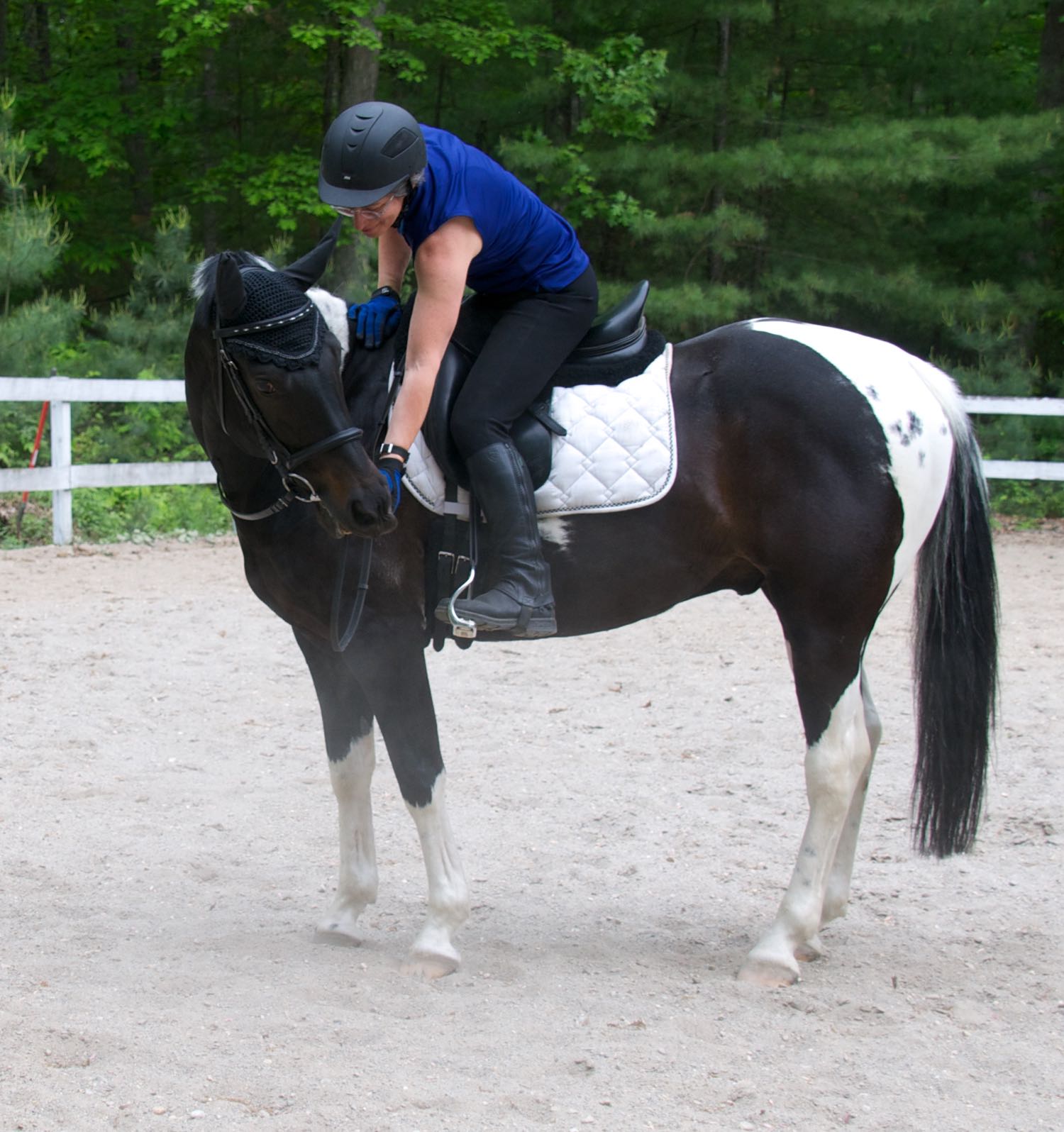Training Philosophy
Behavior that is rewarded will happen again – with enthusiasm.
I believe that when you listen to your horse, that they will listen to you.
Be clear, be consistent, and be fair in what you ask of your horse.
When I was sixteen, I went to riding school in England. I clearly remember having a lesson on a slab-sided, hard-mouthed cob. At the end of the hour the students were allowed to ask a question of the instructor. I muttered something about how This horse is impossible to ride. My instructor replied You were so busy focusing on the bad, that you didn’t notice the one good stride, and if you don’t pay attention to what’s right, you can’t get more of it. In the next lesson, each time my horse took a balanced step, she said, there! She taught me how to look for and to reward each good stride. She was right – when you focus on the good, it multiplies. Years later I discovered the work of Karen Pryor, and I learned about the science behind what is popularly called “positive reinforcement” and why punishment is not an effective training technique.
Along with the science of behavior, I’ve studied horse ethology – which is how horses behave in their natural environment. Knowing what horses do when they feel safe or afraid, why they move, and what their preferred feeding habits are, can help us relieve stress from their lives and become better caregivers. By understanding how and why horses develop friendships, and how their society functions, we can become better trainers and riders. Research shows that horse society is built not on dominance, but on cooperative groups. This is one reason that I call my work The Cooperative Horse – because being cooperative is their true nature. This knowledge has allowed me to drop many long-held assumptions about training so that my interactions with horses have become not only more effective, but kinder and gentler.
Training Techniques
I define the goal, break it down into the smallest achievable of steps, and build from success to success.
As a teacher, I do this for my human students as well as the horses.
I had my first dressage lesson when I was a teenager, and was immediately smitten with this discipline that promised a way to communicate to the horse with subtlety and finesse. I loved the before and after photos of young gangly horses transformed into graceful athletes. For years I lessoned with world-class instructors. However, I was not so enamored with techniques that depended on whips and spurs, draw reins and conflict. Eventually, I continued to ride, but on my own terms, away from competitions. In 2013 I bought a green horse. He needed dressage to improve his balance and athleticism. Under saddle, I combine traditional dressage with positive reinforcement techniques. This approach clearly defines each goal, breaks that down into the smallest, doable increments, and rewards each step along the way. It is a method that is as satisfying for the horse as it is for the rider. Rewards under saddle are often intangibles, like movement, softness, a rest, a scratch. Sometimes, the reward is a mint. Although there is some use of pressure and tactile information (a squeeze with a leg, for example) this never escalates into punishment and I always communicate with my horse in a way that channels his behavior to what we both want. I explain more about this training method in my blog posts.


